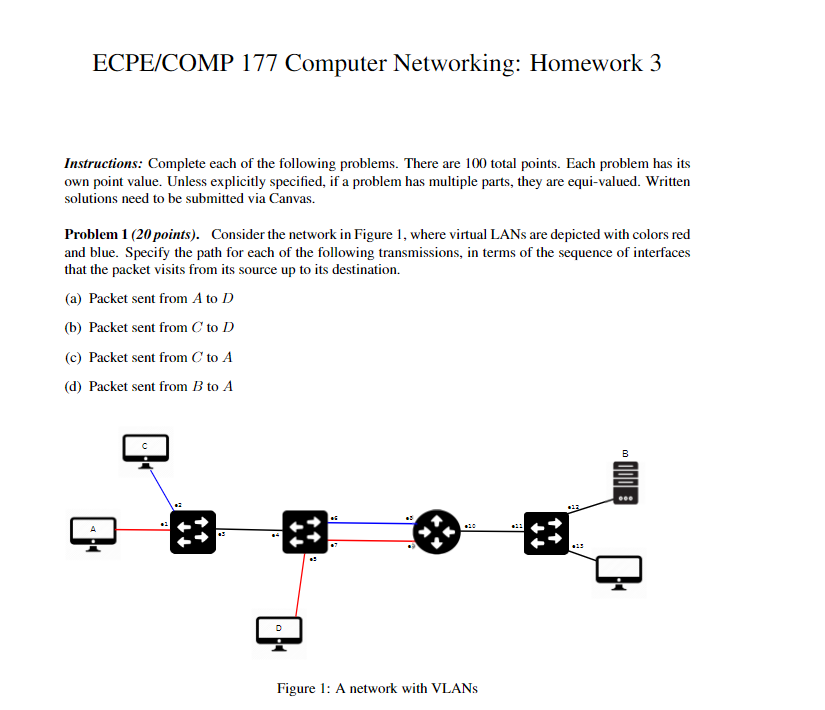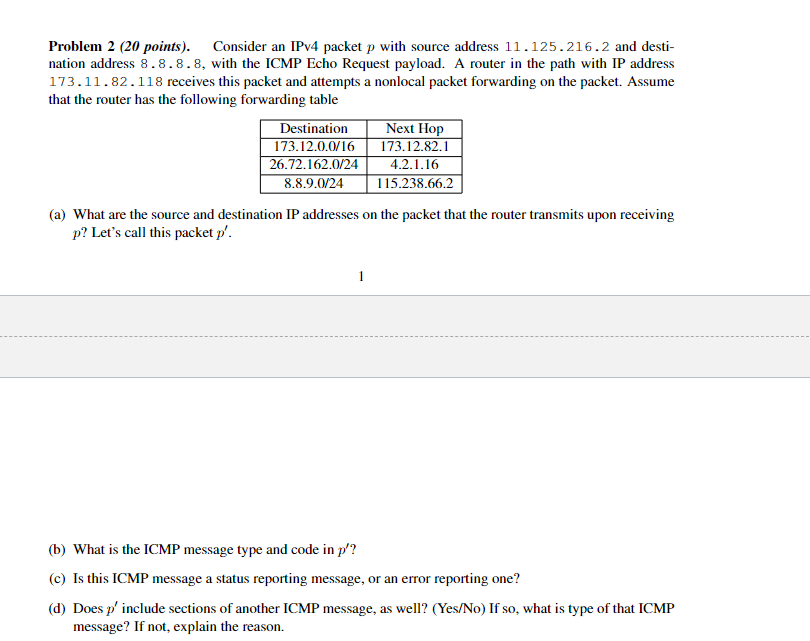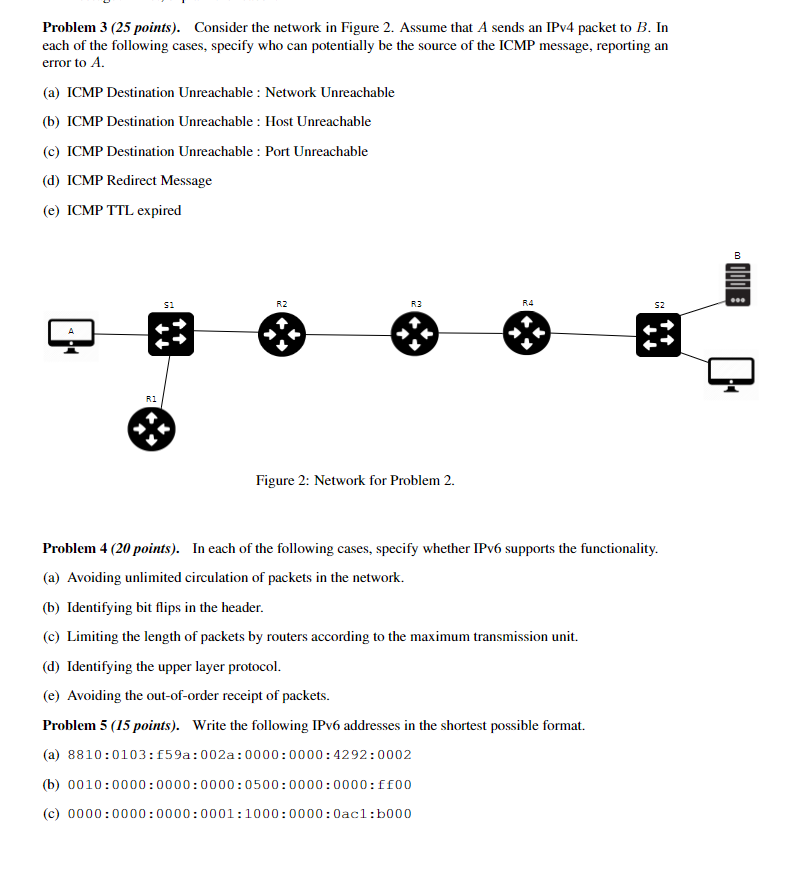Answered step by step
Verified Expert Solution
Question
1 Approved Answer
ECPE/COMP 177 Computer Networking: Homework 3 Instructions: Complete each of the following problems. There are 100 total points. Each problem has its own point



ECPE/COMP 177 Computer Networking: Homework 3 Instructions: Complete each of the following problems. There are 100 total points. Each problem has its own point value. Unless explicitly specified, if a problem has multiple parts, they are equi-valued. Written solutions need to be submitted via Canvas. Problem 1 (20 points). Consider the network in Figure 1, where virtual LANs are depicted with colors red and blue. Specify the path for each of the following transmissions, in terms of the sequence of interfaces that the packet visits from its source up to its destination. (a) Packet sent from A to D (b) Packet sent from C to D (c) Packet sent from C' to A (d) Packet sent from B to A Figure 1: A network with VLANS B OODB Problem 2 (20 points). Consider an IPv4 packet p with source address 11.125.216.2 and desti- nation address 8.8.8.8, with the ICMP Echo Request payload. A router in the path with IP address 173.11.82.118 receives this packet and attempts a nonlocal packet forwarding on the packet. Assume that the router has the following forwarding table Destination 173.12.0.0/16 26.72.162.0/24 8.8.9.0/24 Next Hop 173.12.82.1 4.2.1.16 115.238.66.2 (a) What are the source and destination IP addresses on the packet that the router transmits upon receiving p? Let's call this packet p'. (b) What is the ICMP message type and code in p'? (c) Is this ICMP message a status reporting message, or an error reporting one? (d) Does p' include sections of another ICMP message, as well? (Yes/No) If so, what is type of that ICMP message? If not, explain the reason. Problem 3 (25 points). Consider the network in Figure 2. Assume that A sends an IPv4 packet to B. In each of the following cases, specify who can potentially be the source of the ICMP message, reporting an error to A. (a) ICMP Destination Unreachable: Network Unreachable (b) ICMP Destination Unreachable: Host Unreachable (c) ICMP Destination Unreachable: Port Unreachable (d) ICMP Redirect Message (e) ICMP TTL expired R1 $1 R2 R3 Figure 2: Network for Problem 2. R4 Problem 4 (20 points). In each of the following cases, specify whether IPv6 supports the functionality. (a) Avoiding unlimited circulation of packets in the network. (b) Identifying bit flips in the header. (c) Limiting the length of packets by routers according to the maximum transmission unit. S2 (d) Identifying the upper layer protocol. (e) Avoiding the out-of-order receipt of packets. Problem 5 (15 points). Write the following IPv6 addresses in the shortest possible format. (a) 8810:0103:f59a: 002a: 0000:0000:4292:0002 (b) 0010:0000:0000:0000:0500:0000:0000:ff00 (c) 0000:0000:0000:0001:1000:0000:0acl:b000 B ODD ***
Step by Step Solution
There are 3 Steps involved in it
Step: 1

Get Instant Access to Expert-Tailored Solutions
See step-by-step solutions with expert insights and AI powered tools for academic success
Step: 2

Step: 3

Ace Your Homework with AI
Get the answers you need in no time with our AI-driven, step-by-step assistance
Get Started


